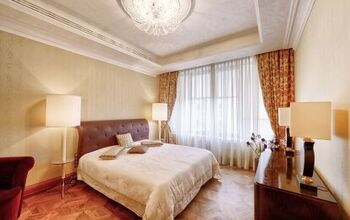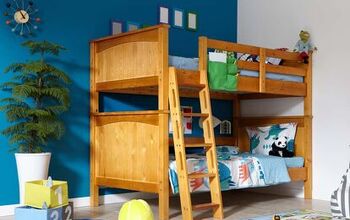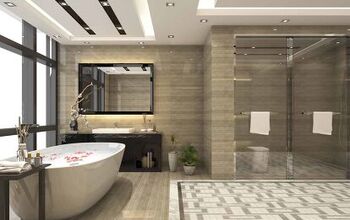The Importance Of Lighting In Home Design And How To Get It Right

Lighting may very well be one of the most overlooked aspects of home design — it’s kind of like the kid that keeps getting picked last for kickball. However, imagine if that kid ends up being the star player and leads their team to victory. Well, that’s exactly what lighting can do for your space if you use it wisely.
Good lighting makes your home look, feel, and function as you want it to. The right light has the power to boost your home’s value and your mood. Consider ambient, task, and accent lighting, and choose fixtures that match your design. Pay attention to things like wiring, placement, color temperature, and special features, like dimmers, to create the perfect lighting scheme.
Whether you’re designing a brand-new home, renovating your house, or just trying to make a few subtle changes, focus on lighting. The right light has the power to transform the way a room looks, feels, and functions, so it’s essential to make it a priority.
Five Reasons You Need To Make Lighting A Priority In Your Design Plan
Not convinced lighting is such a big deal? Okay, okay, we get it. It's so much more fun to pick out paint colors and furniture — or is it? There are some really cool features in the world of lighting, especially with smart technology. Plus, you can find some amazing light fixtures that can double as statement pieces in your design.
And if you pick colors and furniture without thinking about lighting, these things can end up looking totally different once everything's said and done. Therefore, accept that lighting matters, and here are the reasons why.
1. Lighting Sets The Tone Of Your Entire Home
The lighting in a room dictates the mood and ambiance in the space. Warm, soft lighting makes a room feel cozy and inviting, while bright, cool lighting has a more energized vibe.
Different lighting styles evoke different emotions, so it's important to match the right light to how you want to feel when you’re in a room. For example, you want to feel relaxed in your bedroom, productive in your home office, and upbeat in your kitchen. You can use lighting to help create the appropriate settings that facilitate these moods.
2. Good Lighting Enhances Interior Design Features
Good lighting highlights architectural features, textures, and colors. You can use lighting to draw attention to artwork, accent walls, or design details that may otherwise go unnoticed.
The opposite is also true, and you can utilize lighting to mask or hide certain room features you aren’t able to change. Strategically placed light fixtures create visual interest and dimension. They allow you to emphasize focal points and create contrasts within the space.
3. You Need Good Lighting To Improve Functionality
Every room in your house has a purpose (or should, anyway). Some rooms even have multiple jobs, like a home office that doubles as a guest room or a dining room that moonlights as a study.
Since each room has a certain function, each room requires specific lighting. For example, a kitchen needs great task lighting for chopping and prepping meals, unless you want to lose a finger.
A bedroom needs lighting that can dim to set a calm mood that transitions well into bedtime. Without proper lighting, the activities you do each day become frustrating. You end up doing things in places you never intended to. For example, your kids do their homework in your room because it has brighter lights than the kitchen. No, thank you.
4. Natural Light Helps Boost Your Mood
It’s important to take advantage of natural light for many reasons, but most importantly, it elevates your mood. It helps regulate your internal clock and can increase productivity. You just feel happier and more energized when you’re in a room full of natural light.
On the other hand, poor lighting has negative effects on your body and mood, leading to things like fatigue and eye strain. When designing your home, think about the natural light in each space.
If a room lacks natural light, consider ways to mimic it artificially. Alternatively, adjust your plan for the room to use it during different times of the day. To maximize natural light, choose a light color scheme and mirrors to help reflect light around the room. Ditch heavy drapery for airy sheers, and if you have the budget, consider adding or enlarging a window.
5. Good Lighting Could Make Your Home’s Value Shine
Well-lit homes tend to read as more welcoming to buyers, increasing your home’s overall appeal. The right lighting can make a home feel cleaner, more spacious, and newer. Updating light fixtures and layering different types of light can enhance your home’s impression on buyers, giving them the perception that it’s worth more.
Layer Lighting To Get It Right
There are three main types of lighting: ambient, task, and accent. It’s important to utilize all three in your home to achieve the best results.
1. Ambient Lighting
Ambient lighting is the basic lighting that serves as the foundation for a room. It’s usually the overhead ceiling fixture, emitting a consistent lighting level throughout the space. Other sources of ambient lighting are recessed lights or even natural light streaming in through the windows.
To maximize ambient lighting, use dimmer switches to adjust the levels throughout the day. Choose a warmer color temperature and softer lights to avoid the room feeling too cold and harsh.
Since ambient lighting usually comes in the form of your room’s main light fixture, choose a piece that matches the scale of the room. In other words, if you have a large, expansive family room with tall ceilings, opt for an oversized, bold fixture instead of a generic boob light (you know the one).
2. Task Lighting
Task lighting is kind of like the safety officer of the lighting world. It’s there to make sure you can do what needs to be done safely and efficiently. Task lighting could be a desk lamp, reading light, or overhead pendant that ensures you chop carrots and not your fingers.
Task lighting is typically more concentrated and brighter than the ambient lighting in a room. Position task lights near work areas to cancel out shadows and provide optimal visibility for the jobs at hand. If a task light has to work for multiple activities, look for adjustable fixtures that you can tweak as needed.
3. Accent Lighting
If task lighting is the safety officer of the lighting world, accent lighting is the marketing director. It adds visual interest, highlights important aspects of a space, and draws attention to statement pieces.
It invites you into a room and helps define the mood, serving a more aesthetic purpose. Examples of accent lights are wall sconces, LED strips, picture lights, and even candles. Accent lighting is a good way to introduce depth and contrast to a space and to pull attention to focal points, but use it sparingly.
Tips For Choosing The Right Light Fixtures
There are pretty much endless options for light fixtures, and you want to choose wisely. Once you determine what kind of lighting you need, it’s time to focus on balancing form and function.
- Consider The Scale And Proportion — Choose a light fixture that matches the scale of the room. A small pendant in a huge kitchen looks lost and unnecessary. On the contrary, a huge antique chandelier in a dining room the size of a sardine can is overkill.
- Match Your Design Aesthetic — Select a light fixture that complements your overall design scheme. If you’re mixing styles, look for a piece that shares the same color as your palette or utilizes similar materials to what you’re using in the rest of the space.
- Pay Attention To Cords -- Don’t forget about the logistics. If you plan to hang a wall sconce, are you plugging it in and using a cord cover or hiring an electrician to hardwire the light? If you want to add a fun lamp to your corner reading nook, do you need to install an outlet? Do you hate to see cords and exposed wires? Then maybe you want to look for battery-operated bulbs or similar options.
Get Your Light Right To Create A Welcoming Home
Mix ambient, task, and accent lighting, and match it well with the purpose of your rooms. Utilize features like dimmers to help create the perfect mood in each space and choose the right color temperature for each room. Pay close attention to where you put lights, so you highlight features, avoid shadows, and downplay things you don’t like.
To get the right light in your space, it needs to be a part of your design plan from the beginning. It’s not just about helping you see. Lighting helps create the mood, bring balance, and enhance the atmosphere of your home.
Related Guides:
- 11 Ways To Create Mood Lighting Without A Dimmer Switch
- How To Light A Bedroom Without Overhead Lighting
- 8 Different Types of Recessed Lighting (with Photos)

Stacy Randall is a wife, mother, and freelance writer from NOLA that has always had a love for DIY projects, home organization, and making spaces beautiful. Together with her husband, she has been spending the last several years lovingly renovating her grandparent's former home, making it their own and learning a lot about life along the way.
More by Stacy Randall











![The 5 Best Angle Grinders – [2022 Reviews & Buyer's Guide]](https://cdn-fastly.upgradedhome.com/media/2023/07/31/9071326/the-5-best-angle-grinders-2022-reviews-buyer-s-guide.jpg?size=350x220)
![The 10 Best Table Saws - [2022 Reviews & Buyer's Guide]](https://cdn-fastly.upgradedhome.com/media/2023/07/31/9070645/the-10-best-table-saws-2022-reviews-buyer-s-guide.jpg?size=350x220)














